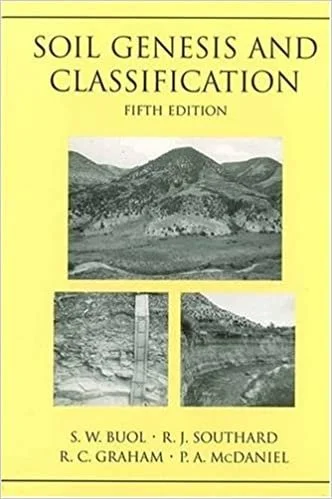Soil genesis is sometimes referred to as soil formation. Soil classification is also known as soil taxonomy. Collectively, the two fields of study are known as "pedology."
This comprehensive work on the study and examination of soils, or pedology, is widely used by undergraduate and graduate soil science instructors as well as soil scientists, engineers, planners and ecologists. It covers the function and use of soils, as well as soil formation and categorization. Individual chapters explain morphology and composition, biogeochemical processes in soil formation, soil's place in the ecosystem, space and time in solid formation, modern classification systems, alfisols, andisols, aridsols, entisols, gelisols, histosols, inceptisols, mollisols, oxisols, spondosols, ultisols, vertisols, spatial arrangement, and the interpretation of soil surveys.
The latest edition of this classic soil science textbook and reference includes a review of the many different soil classification systems used around the world, from Russia and France to South Africa and Australia. While the differences in these systems hinder international communication about soils, they nevertheless serve their own indigenous populations and are unlikely to be abandoned in favor of any standardized worldwide classification system.
The U.S. Soil Taxonomy, begun in 1975 with a unique design and nomenclature, continues to evolve and expand. This updated text includes new nomenclature and soil classifications that have been developed since the fourth edition was published in 1997.
"Soil genesis is an evolving discipline devoted to understanding how soils differ in form and function," the authors explain in their preface to this edition. "The widely held view that a soil is a formed and therefore a nearly stable entity has evolved into the view that soil is a dynamic natural entity that interfaces with ecosystems and human endeavors."
